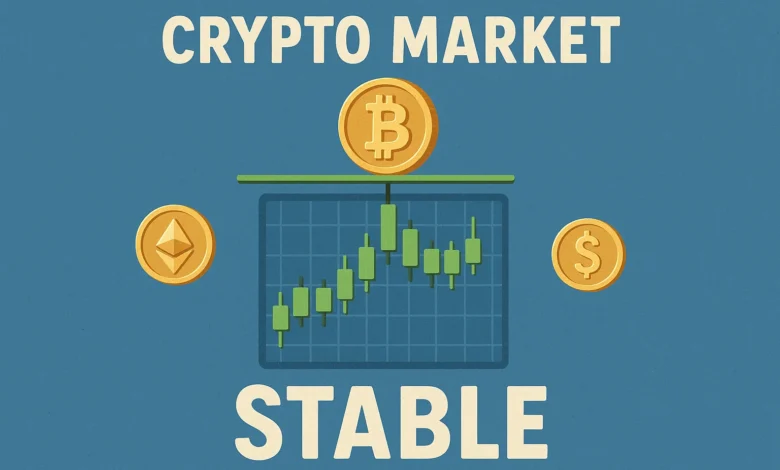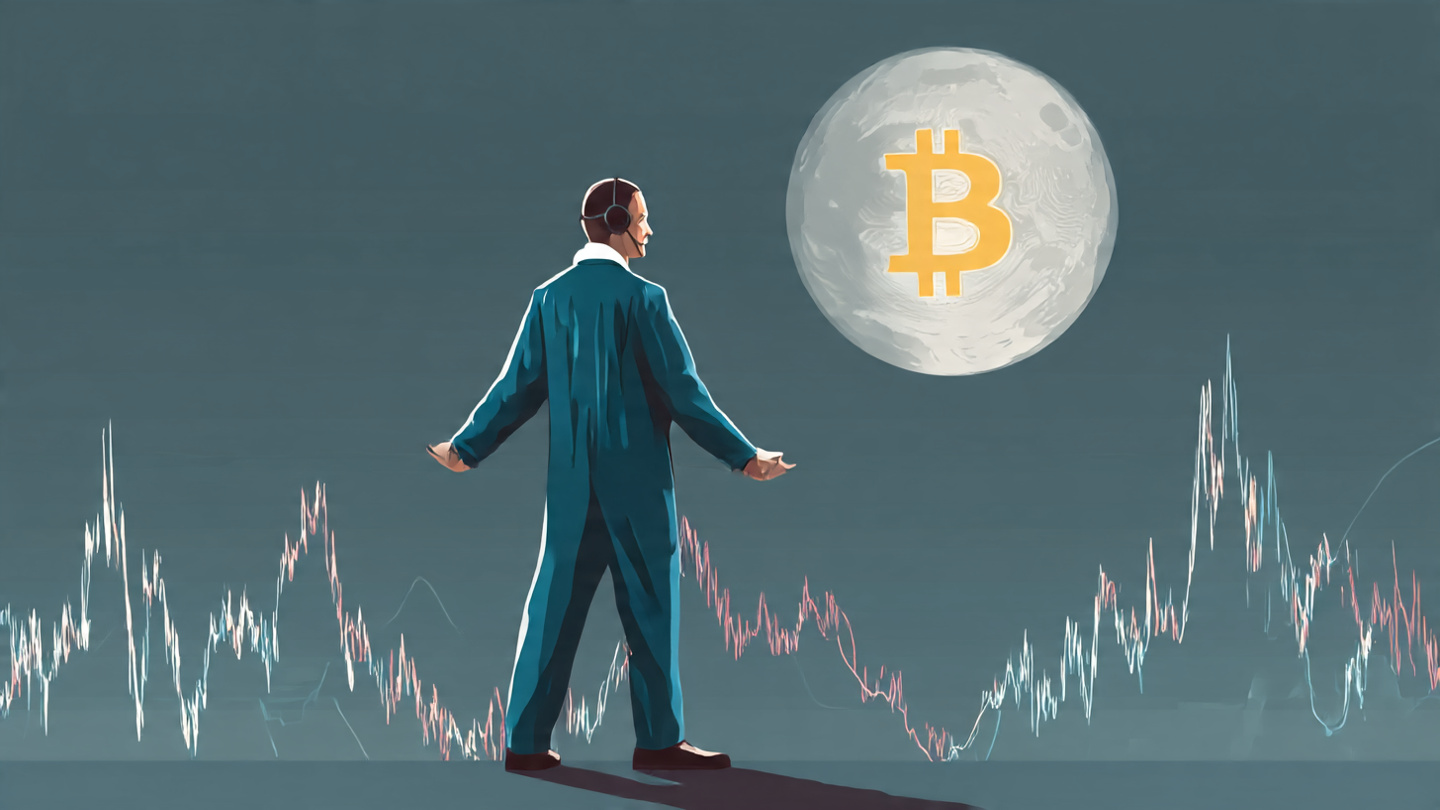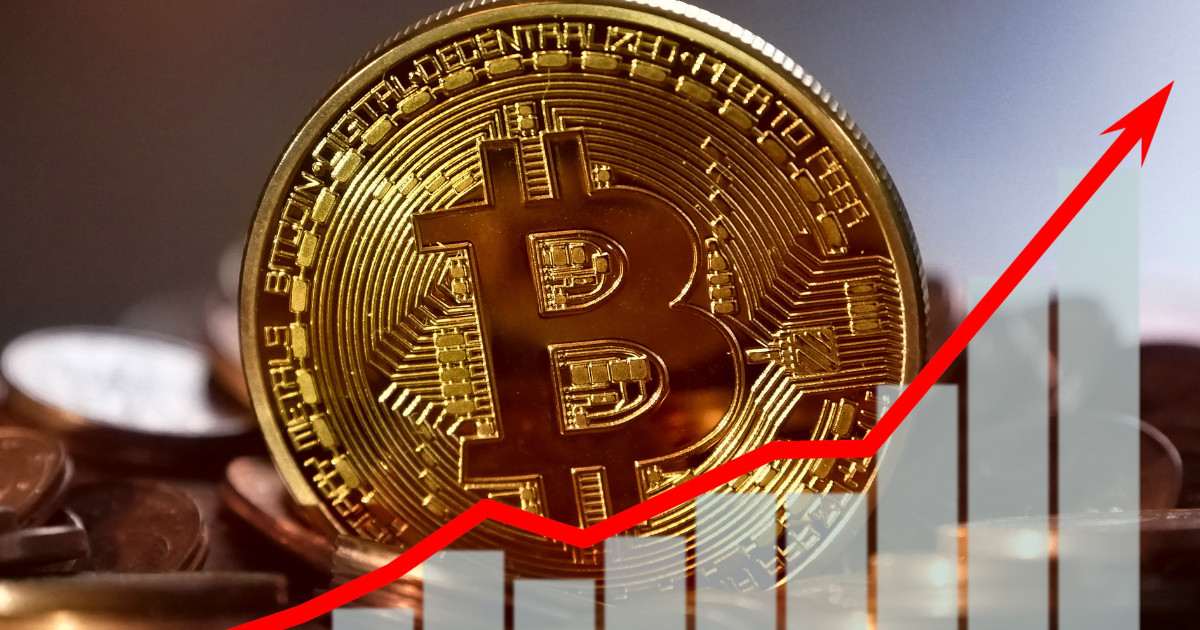Crypto Market Stable Despite Rising Fear Levels

After months of wild swings and dramatic headlines, the crypto market is showing surprising resilience. Despite growing investor fear, tightening regulations, and global macroeconomic headwinds, Bitcoin and major altcoins have managed to hold steady. Market sentiment remains cautious, but prices are showing a kind of quiet strength that suggests consolidation rather than collapse.
As the crypto fear and greed index hovers around neutral to slightly fearful territory, many analysts believe the current stability could be the calm before the next big move. Traders are weighing concerns over interest rates, inflation, and potential regulatory crackdowns against a backdrop of increasing institutional interest and technological progress across the blockchain ecosystem. This article explores why the crypto market holds steady despite lingering fear, what factors are influencing investor behavior, and how this period of equilibrium might set the stage for the next phase of the digital asset cycle.
Understanding the Current State of the Crypto Market
A Period of Consolidation After Volatility
Throughout the past few months, the crypto market has been on an emotional rollercoaster. Bitcoin’s price movements have oscillated between sharp rallies and sudden pullbacks, while Ethereum and other altcoins have mirrored its behavior with slightly higher volatility.
However, the current phase appears to be one of consolidation. Bitcoin is trading within a relatively tight range, signaling market indecision rather than panic. Historically, such periods of low volatility often precede significant price moves, but for now, the market seems to be stabilizing after digesting a turbulent first half of the year.
Market Sentiment: Fear Persists, but Confidence Builds Slowly
The crypto fear and greed index, which measures market sentiment based on volatility, trading volume, and social media trends, continues to indicate a cautious tone. Investors remain wary due to global economic uncertainty and lingering regulatory threats. Yet, under the surface, there are signs of growing confidence. Long-term holders (LTHs) have been accumulating Bitcoin at lower price levels, while institutional inflows into digital asset funds have resumed after a temporary slowdown. These behaviors suggest that while fear dominates headlines, conviction remains strong among seasoned participants.
The Factors Supporting Crypto Market Stability

The crypto market’s ability to remain steady amid fear is not a coincidence—it’s the result of several fundamental and structural forces at play.
Institutional Adoption and Maturing Infrastructure
Institutional adoption continues to expand, with traditional finance firms like BlackRock, Fidelity, and Grayscale deepening their involvement in digital assets. The rise of Bitcoin ETFs and Ethereum staking products has provided new on-ramps for capital, supporting market liquidity even in periods of uncertainty. Furthermore, the development of regulated exchanges, improved custody solutions, and clearer accounting standards is making crypto investments more accessible and trustworthy to corporate and institutional investors. This growing maturity acts as a stabilizing force, cushioning the market from extreme volatility.
Bitcoin’s Resilience as a Market Anchor
Bitcoin’s position as the dominant digital asset remains unchallenged. Despite fluctuations, it continues to act as a “haven” within crypto. When fear grips the market, investors tend to move funds from high-risk altcoins into Bitcoin, reinforcing its stability. Moreover, on-chain data reveals a steady increase in addresses holding more than one Bitcoin, a sign that long-term accumulation is taking place. This slow but consistent accumulation pattern provides a solid floor of support that limits downside risk.
Ethereum’s Continued Network Growth
Ethereum, the second-largest cryptocurrency by market capitalization, is also playing a major role in maintaining market balance. The Ethereum 2.0 Proof-of-Stake model has significantly reduced new supply issuance, while network activity in DeFi (Decentralized Finance) and NFTs (Non-Fungible Tokens) continues to expand. Even during market slowdowns, Ethereum’s ecosystem thrives with development and innovation. This ongoing activity reassures investors that the network’s long-term value proposition remains intact, helping to stabilize prices even when sentiment dips.
Fear Factors: Why Investors Remain Cautious
While the market has shown resilience, the underlying sentiment remains one of caution. Several ongoing risks continue to cast a shadow over investor confidence.
Macroeconomic Pressures and Interest Rate Concerns
The global economy is still grappling with high interest rates, inflation concerns, and central bank policy uncertainty. These factors have created a risk-averse environment, pushing many investors to reduce exposure to speculative assets like cryptocurrencies. Even though inflation rates are gradually declining in major economies, the cost of borrowing remains high, limiting liquidity in both traditional and crypto markets. Until central banks pivot to a more accommodative stance, risk assets will likely remain under pressure.
Regulatory Uncertainty
One of the biggest sources of fear in the crypto market continues to be regulatory scrutiny. Governments around the world are tightening their grip on the industry, seeking to implement frameworks that protect consumers but may also stifle innovation.
The U.S. Securities and Exchange Commission (SEC) has intensified its focus on exchanges, staking platforms, and token issuers, creating a climate of uncertainty. In Europe, the MiCA (Markets in Crypto-Assets) regulation is setting new compliance standards. While these developments aim to legitimize the industry in the long run, in the short term, they contribute to investor anxiety.
Liquidity Challenges and Exchange Risks
After several high-profile collapses—such as FTX, Celsius, and Voyager—investor trust in centralized exchanges has not fully recovered. Many traders prefer to hold funds in cold wallets, reducing liquidity on exchanges and making the market more sensitive to large trades.
Although decentralized exchanges (DEXs) have gained traction, their adoption is still limited by technical barriers and regulatory ambiguity. This cautious stance from participants reflects lingering fear about counterparty risk and systemic fragility within the crypto ecosystem.
The Psychology of Fear in the Crypto Market
How Fear Shapes Market Behavior
The crypto market is deeply influenced by investor psychology. Fear, uncertainty, and doubt (often abbreviated as FUD) can trigger emotional reactions that lead to panic selling and exaggerated market movements. However, the current phase of the market suggests that fear is less about panic and more about hesitation. Traders are not rushing to sell, but they are also not aggressively buying. This behavior reflects a wait-and-see attitude, where investors prefer to observe macro developments before making bold moves.
Lessons from Past Market Cycles
Historically, periods of fear and consolidation have often marked the early stages of new bull cycles. For example, in late 2018 and mid-2020, market sentiment was extremely negative before Bitcoin entered significant rallies. Many analysts argue that the current environment mirrors those periods—a base-building phase where the market absorbs excess leverage, weeds out weak hands, and prepares for long-term growth.
The Role of Stablecoins and Liquidity Flows
Stablecoins Acting as Shock Absorbers
Stablecoins like USDT (Tether), USDC, and DAI play a crucial role in maintaining market stability. They provide liquidity, enable trading, and act as safe harbors for investors during volatile times. Recent data shows that stablecoin market capitalization has stabilized after months of contraction, suggesting that traders are keeping funds on the sidelines, ready to re-enter when confidence improves. This steady liquidity helps prevent sharp crashes and supports price equilibrium.
Institutional Liquidity and Derivatives
Another factor stabilizing the market is the increasing sophistication of crypto derivatives markets. Futures, options, and perpetual contracts now allow traders to hedge positions effectively, reducing volatility. Institutions are particularly active in this space, using regulated derivatives platforms like CME and Bakkt to manage risk exposure. As a result, price movements are becoming more predictable and less prone to emotional extremes.
Emerging Trends Offering Hope Amid Fear

Even as fear lingers, several emerging trends are quietly building optimism for the crypto market’s future.
Layer-2 Expansion and Blockchain Innovation
The rapid expansion of Layer-2 scaling solutions such as Arbitrum, Optimism, and Base is transforming Ethereum’s scalability and user experience. These networks reduce transaction fees and improve speed, making decentralized applications (dApps) more accessible. Such technological progress reinforces confidence in the broader blockchain ecosystem. Investors see innovation as a sign of strength, signaling that the industry is evolving beyond speculative trading toward real-world utility.
Tokenization and Institutional Integration
The next major wave of crypto adoption may come from tokenized real-world assets (RWAs). Financial institutions are experimenting with tokenizing bonds, real estate, and equities, bringing trillions of dollars in traditional assets onto blockchain networks.
This integration of blockchain technology into mainstream finance could drive long-term growth, offsetting short-term fear. As more institutions participate, liquidity deepens and volatility decreases, stabilizing the overall crypto market.
DeFi Resilience and Evolving Use Cases
Despite past downturns, DeFi protocols continue to innovate. Lending platforms, decentralized exchanges, and yield aggregators are becoming more secure, efficient, and compliant. The rise of Real Yield DeFi, where returns are generated from genuine revenue rather than token inflation, marks a shift toward sustainability. This evolution contributes to market confidence, demonstrating that the crypto economy can thrive even without speculative mania.
What Comes Next for the Crypto Market
Potential Catalysts for Growth
Several upcoming catalysts could help the crypto market transition from stagnation to recovery. These include potential interest rate cuts, regulatory clarity, and institutional expansion through ETF approvals and blockchain integration. If Bitcoin maintains its current range and macroeconomic conditions improve, analysts expect renewed capital inflows by early next year. Historically, post-consolidation phases like this have led to multi-month rallies as sidelined capital re-enters the market.
The Long-Term Bullish Case
Despite fear, the long-term bullish case for crypto remains intact. Bitcoin’s scarcity, Ethereum’s smart contract dominance, and blockchain’s real-world adoption trends all point to a sustainable growth trajectory. As more jurisdictions regulate responsibly and institutional infrastructure matures, the crypto asset class is likely to strengthen its position within the global financial system.
Conclusion
The crypto market’s steadiness amid fear is a testament to its growing maturity. While volatility has not disappeared, the days of extreme emotional trading are gradually giving way to a more balanced, data-driven environment. Fred Thiel, institutional leaders, and market analysts all highlight a key theme: despite fear and uncertainty, Bitcoin and Ethereum remain fundamentally strong, underpinned by adoption, innovation, and technological evolution. For investors, this phase offers an opportunity to observe, accumulate strategically, and prepare for the next growth wave. History shows that fear often marks the beginning of recovery—and today’s market may be quietly setting the stage for tomorrow’s rally.
FAQs
Q: Why is the crypto market holding steady despite fear?
The market is stabilizing because of strong institutional adoption, growing long-term accumulation, and reduced speculative activity, even as fear persists.
Q: What is causing fear in the crypto market right now?
Ongoing regulatory uncertainty, high interest rates, and memories of past collapses like FTX continue to make investors cautious.
Q: Is this a good time to buy cryptocurrencies?
That depends on your risk tolerance. Periods of consolidation often present accumulation opportunities for long-term investors, but volatility remains possible.
Q: How are stablecoins influencing market stability?
Stablecoins provide liquidity and act as safe havens during volatile periods, helping maintain balance in the crypto ecosystem.
Q: What could trigger the next major crypto rally?
Potential triggers include interest rate cuts, ETF approvals, regulatory clarity, and continued institutional investment in blockchain infrastructure.
Read More. Cryptocurrency Market Cap: True Size of Crypto Value




